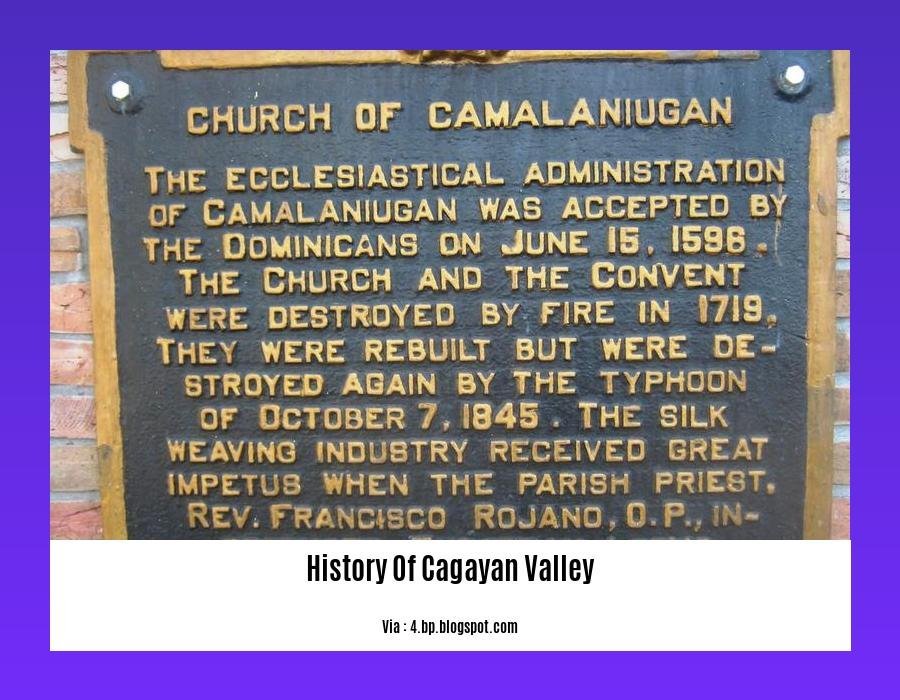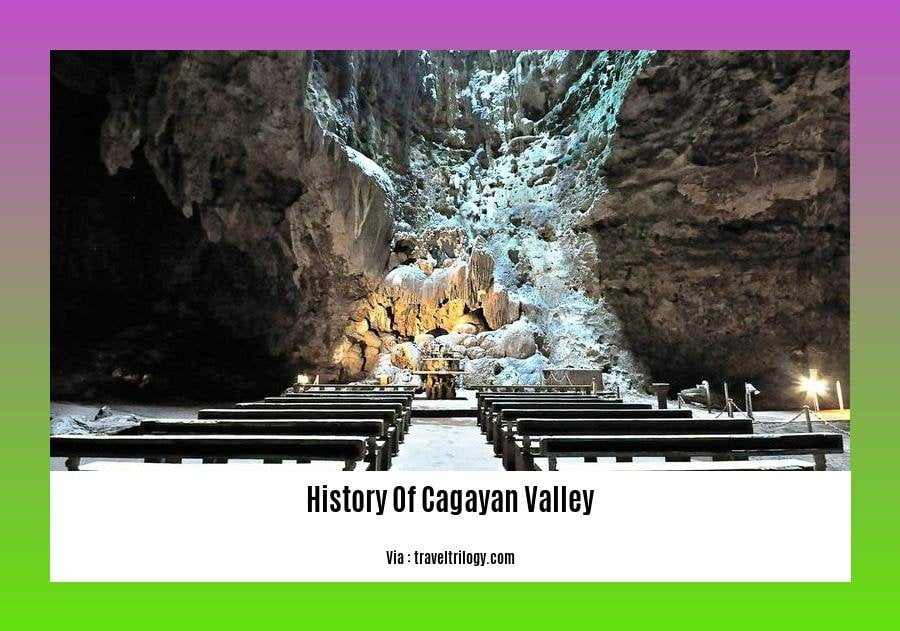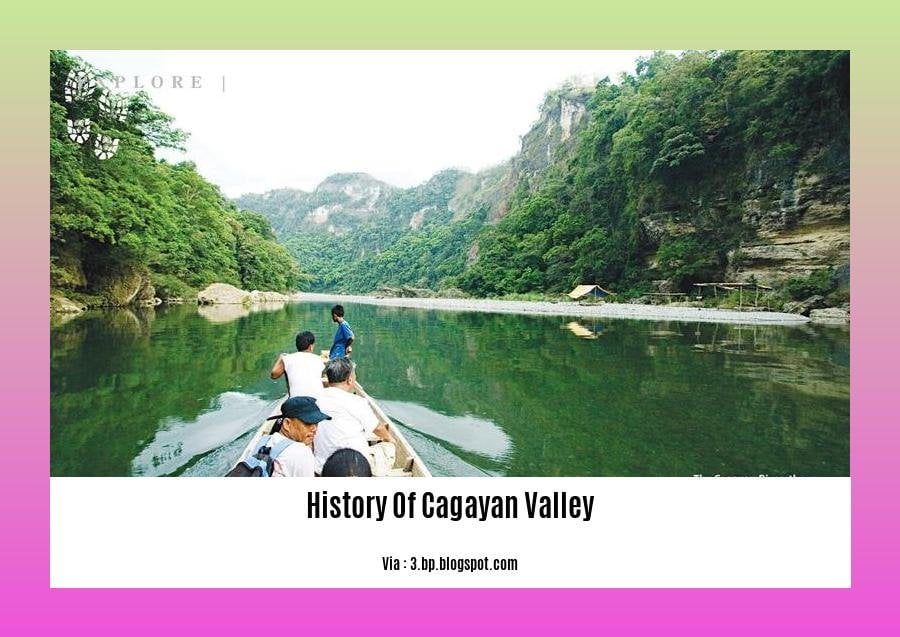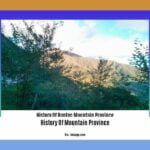Embark on a historical odyssey as we delve into the enchanting tapestry of Cagayan Valley, a region pulsating with untold stories and an indelible cultural heritage. Join us on this journey through time as we unveil the captivating chronicles of a land brimming with diverse ethnicities, time-honored traditions, and pivotal events that shaped its remarkable destiny. Prepare to be enthralled as we shed new light on the hidden gems and forgotten chapters that define the very essence of Cagayan Valley—a region poised to captivate your imagination with its rich historical tapestry.
Key Takeaways:
- Cagayan was one of the earliest provinces in the Philippines during Spanish colonial times.
- La Provincia de Cagayan initially covered the entire Cagayan Valley, including Isabela, Quirino, Nueva Vizcaya, Batanes, and parts of Kalinga, Apayao, and Aurora.
- Cagayan Valley had a rich and diverse prehistoric civilization.
- Archaeological evidence suggests that early humans may have inhabited Cagayan.
- One of the earliest known humans in the Philippines likely lived in Cagayan thousands of years ago.
- Cagayan Valley was home to hunter-gatherers who specialized in hunting mollusks and stockpiled their leftover shells, forming the largest deposit of its kind in the Philippines.
History of Cagayan Valley

Cagayan Valley: A Tapestry of Past and Present
The history of Cagayan Valley is a captivating tale that spans thousands of years, beginning with the earliest human settlements in the region. Archaeological evidence suggests that Cagayan may have been home to early humans, making it one of the Philippines’ first inhabited regions.
Prehistoric Civilization
Cagayan Valley was home to a thriving prehistoric civilization with a rich and diverse culture. The region’s inhabitants were hunter-gatherers who specialized in hunting mollusks and stockpiled their leftover mollusk shells in numerous sites in Gattaran and Lal-lo. Over time, these shells formed the largest stock of this kind in the Philippines, serving as a testament to the region’s deep history.
Spanish Colonial Period
During the Spanish colonial period, Cagayan was one of the early provinces established and played a significant role in the country’s history. La Provincia de Cagayan encompassed the entire Cagayan Valley, including the present-day provinces of Isabela, Quirino, Nueva Vizcaya, Batanes, and portions of Kalinga, Apayao, and Aurora. This vast province served as a gateway to the north and played a crucial role in the colonization of the Philippines.
Cultural Heritage
Cagayan Valley is home to a diverse population with a rich cultural heritage. The region is home to various ethnic groups, including the Ibanag, Itawis, Gaddang, and Kalinga people. Each group has its own unique language, traditions, and customs, contributing to the region’s vibrant cultural landscape.
Journey Through Time
Exploring the history of Cagayan Valley is like embarking on a journey through time. From the prehistoric settlements to the Spanish colonial period and the present day, the region has witnessed countless historical events and developments. Each era has left its mark on the region, shaping its culture, traditions, and way of life.
Uncovering Hidden Stories
The history of Cagayan Valley is replete with hidden stories and forgotten chapters that are waiting to be uncovered. The region’s rich cultural heritage, diverse ethnicities, and historical landmarks provide ample opportunities for researchers and enthusiasts to delve into the past and shed new light on the region’s fascinating history.
Explore the history of Bohol Philippines, a province steeped in cultural heritage and natural wonders. Journey through time and discover the captivating stories that shaped this remarkable place.
Unravel the history of Bontoc Mountain Province and immerse yourself in the rich traditions and heritage of the indigenous people. Click to learn about their fascinating way of life, unique rituals, and deep connection to the land.
The American Colonial Period: A Chapter of Progress and Transformation

Key Takeaways:
-
Population shifted upvalley during the colonial period.
-
The Higaonon were early settlers of Cagayan de Oro.
-
The Americans established the Provincial Government of Cagayan in 1901.
-
Cagayan was recognized as a grand division of the Philippine Islands in 1917.
-
Cagayan de Oro played a significant role in the resistance against the Marcos dictatorship.
-
Today, Cagayan de Oro is a major city in the Philippines and a popular tourist destination.
As the American colonial period dawned upon the shores of Cagayan Valley, a new chapter of progress and transformation began to unfold. The Americans brought with them a wealth of ideas, technologies, and administrative systems that would leave an indelible mark on the region’s history.
One of the most significant changes during this period was the establishment of the Provincial Government of Cagayan in 1901. This marked a shift from the Spanish colonial system to a more centralized and democratic form of government. The Americans also introduced a new educational system, which included the establishment of public schools and the expansion of higher education opportunities.
The Americans also played a crucial role in the development of Cagayan de Oro, which emerged as a major commercial and transportation hub during this period. The city’s strategic location along the Cagayan River made it an ideal gateway for trade and commerce. The Americans also constructed roads and bridges, which improved transportation and facilitated the movement of goods and people.
Another important aspect of the American colonial period was the recognition of Cagayan as a grand division of the Philippine Islands in 1917. This elevated the region’s status and gave it greater autonomy and representation in the national government.
However, the American colonial period was not without its challenges. The region faced a number of natural disasters, including floods, earthquakes, and typhoons. The American colonial government also faced resistance from some local groups, who resented the loss of their traditional way of life.
Despite these challenges, the American colonial period brought about significant progress and transformation in Cagayan Valley. The region’s economy grew, its infrastructure improved, and its people gained access to new educational and economic opportunities. These changes laid the foundation for Cagayan Valley’s future development and prosperity.
Source
- Cagayan | Conquest and Pestilence in the Early Spanish Philippines
- Brief History | Provincial Government of Cagayan
The Japanese Occupation: Resilience in the Face of War
During the years of The Japanese Occupation: Resilience in the Face of War, Java, Indonesia, underwent a substantial transformation that significantly influenced its political landscape. One of the key events that shaped this period was the invasion carried out by the Japanese 16th Army, led by Lieutenant General Hitoshi Imamura.
The Japanese Occupation: Resilience in the Face of War was a complex and challenging time for the people of Java, but it also brought about a newfound sense of resilience and determination. Despite the hardships they faced, the people of Java persevered and ultimately emerged from the war with a renewed sense of national pride and identity.
Key Takeaways:
-
The Japanese occupation of Java, Indonesia, was a significant event that shaped the political developments in the region after 1945.
-
The Japanese invasion of Java was carried out by the 16th Army under the command of Lieutenant General Hitoshi Imamura.
-
The Japanese occupation of Java, Indonesia, had a profound impact on the lives of the Javanese people.
-
Despite the hardships they faced, the Javanese people persevered and ultimately emerged from the war with a renewed sense of national pride and identity.
Sources:
-
The Japanese Occupation of Java, Indonesia
The Post-War Era: Rebuilding, Rejuvenation, and Redefining a New Future
Travel back with me to the transformative era that followed the turmoil of World War II and discover how nations embarked on the remarkable journey of rebuilding, rejuvenating, and establishing a new future.
A Global Revival: Embracing Transformation
The post-war era, brimming with a spirit of renewal, saw countries rising from the ashes of destruction. From Europe to Asia, nations worked tirelessly to heal their wounds and build a better tomorrow. They took bold steps toward economic recovery, societal progress, and geopolitical transformation, shaping a future filled with possibilities.
Pillars of the Post-War Era
-
Rebuilding: The physical reconstruction of war-ravaged cities and infrastructures became a top priority. Governments invested heavily in rebuilding roads, bridges, factories, and housing, creating new opportunities for growth and prosperity.
-
Rejuvenation: The war had taken a heavy toll on economies, and the post-war years ushered in a period of rapid economic growth and development. Nations focused on industrialization, infrastructure expansion, and the development of new technologies, laying the foundation for future economic prosperity.
-
Redefining the Future: The post-war era was a time of profound social and political changes. The rise of decolonization movements led to the independence of many nations, reshaping the global political landscape. The United Nations was established as a platform for international cooperation and peace, reflecting the shared aspiration for a more harmonious and just world.
The Philippines: A Journey of Transformation
The Philippines, a nation that bore the scars of war, embarked on a similar path of renewal. The post-war era marked a time of economic recovery, political transformation, and cultural revival for the country.
Key Takeaways:
- Post-war reconstruction efforts focused on rebuilding infrastructure, housing, and industries.
- Economic recovery and growth were fueled by industrialization and the development of new technologies.
- Decolonization movements led to the independence of many nations, reshaping the global political landscape.
- The United Nations was established to promote international cooperation and peace.
- The Philippines experienced economic recovery, political transformation, and cultural revival during the post-war era.
Sources:
Post-War Reconstruction
The Post-War Era: Rebuilding and Renewal
FAQ
Q1: What are some of the earliest known settlements in Cagayan Valley?
A1: Archaeological evidence suggests that Cagayan Valley was inhabited by early humans thousands of years ago. The earliest known settlements in the region were established by hunter-gatherers who specialized in hunting mollusks. These settlements were located in the coastal areas of Gattaran and Lal-lo, where the Cagayan Valley was home to hunter-gatherers who stockpiled their leftover mollusk shells.
Q2: What was the extent of Spanish colonial rule in Cagayan Valley?
A2: During the Spanish colonial period, Cagayan was one of the earliest provinces established in the Philippines. The Province of Cagayan, known as La Provincia de Cagayan, encompassed the entire Cagayan Valley, including the present provinces of Isabela, Quirino, Nueva Vizcaya, Batanes, and portions of Kalinga, Apayao, and Aurora. The population shifted upvalley during this period.
Q3: How did the American colonial period impact Cagayan Valley?
A3: The American colonial period brought significant changes to Cagayan Valley. In 1901, the Americans established the Provincial Government of Cagayan, which laid the foundation for modern governance in the region. In 1917, Cagayan was recognized as a grand division of the Philippine Islands, further solidifying its political and administrative status.
Q4: What was the role of Cagayan Valley during the Marcos dictatorship?
A4: Cagayan de Oro, a major city in Cagayan Valley, played a significant role in the resistance against the Marcos dictatorship. The city served as a hub for anti-Marcos activities and protests. The people of Cagayan Valley actively participated in the struggle for democracy and human rights during this tumultuous period in Philippine history.
Q5: What are some of the unique cultural and historical landmarks found in Cagayan Valley?
A5: Cagayan Valley is home to a wealth of cultural and historical landmarks that reflect the region’s rich heritage. These landmarks include the centuries-old churches, such as the Tuguegarao Cathedral and the Basilica Minore of Our Lady of Piat, which showcase the region’s strong Catholic roots. The valley is also home to numerous historical sites, such as the Cagayan Valley Museum and Historical Center, which provide insights into the region’s past.
- Unveiling Bernhard Caesar Einstein’s Scientific Achievements: A Legacy in Engineering - July 15, 2025
- Uncover who is Jerry McSorley: CEO, Family Man, Business Success Story - July 15, 2025
- Discover Bernhard Caesar Einstein’s Scientific Contributions: Unveiling a Legacy Beyond Einstein - July 15, 2025















